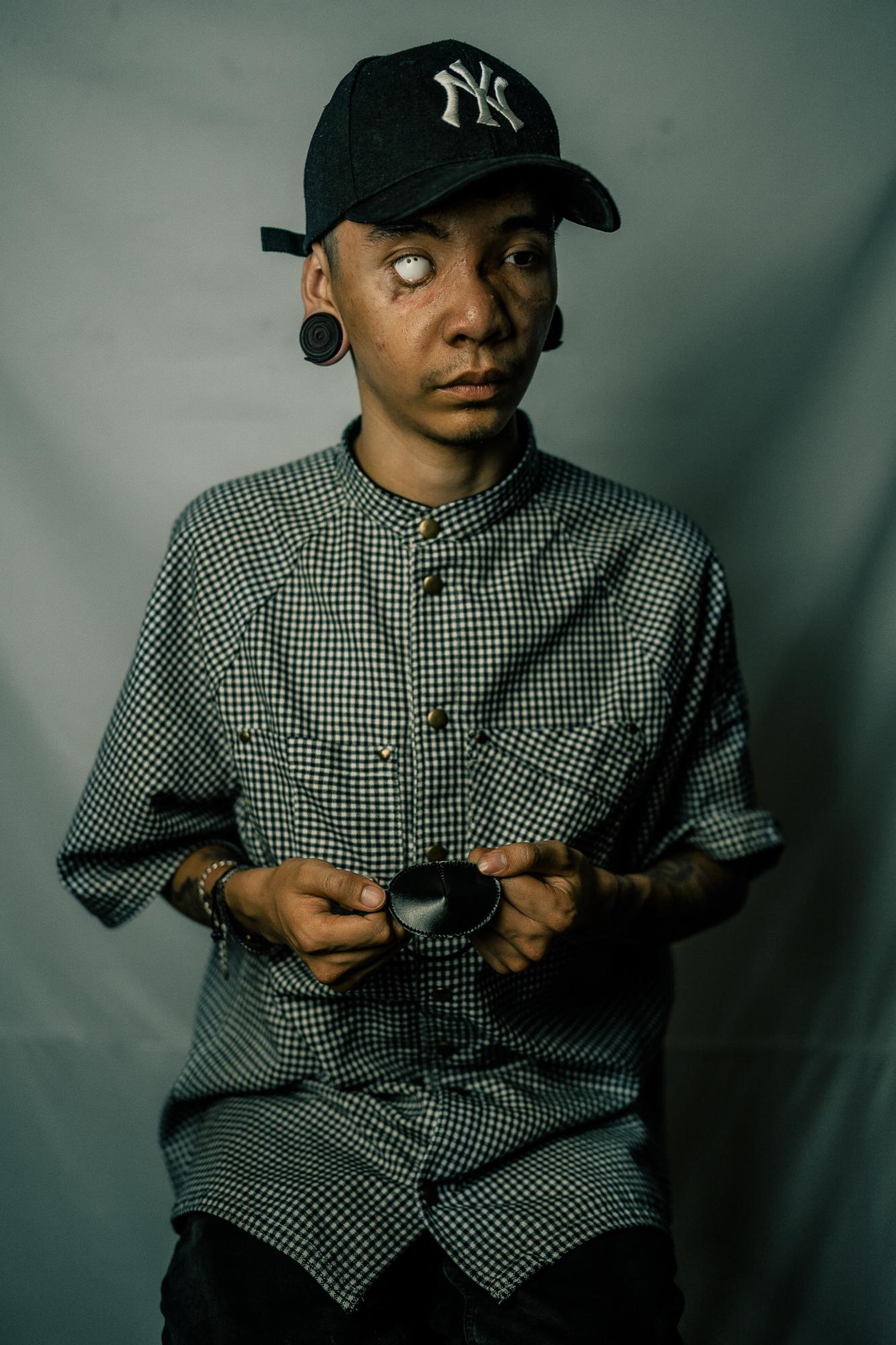
In May of 2021, Daniel was protesting in Bogota, Colombia where he was struck by a tear gas canister, losing his right eye. Daniel poses with an eye patch that he now wears after the incident. The tear gas canister also broke his right cheekbone, nose, and ten teeth. Daniel has now become an activist for other victims who have occurred eye injuries due to protesting. Daniel states, “We are not delinquents…We are people who fight for something, for love, for education, for a future for us and for our families.”
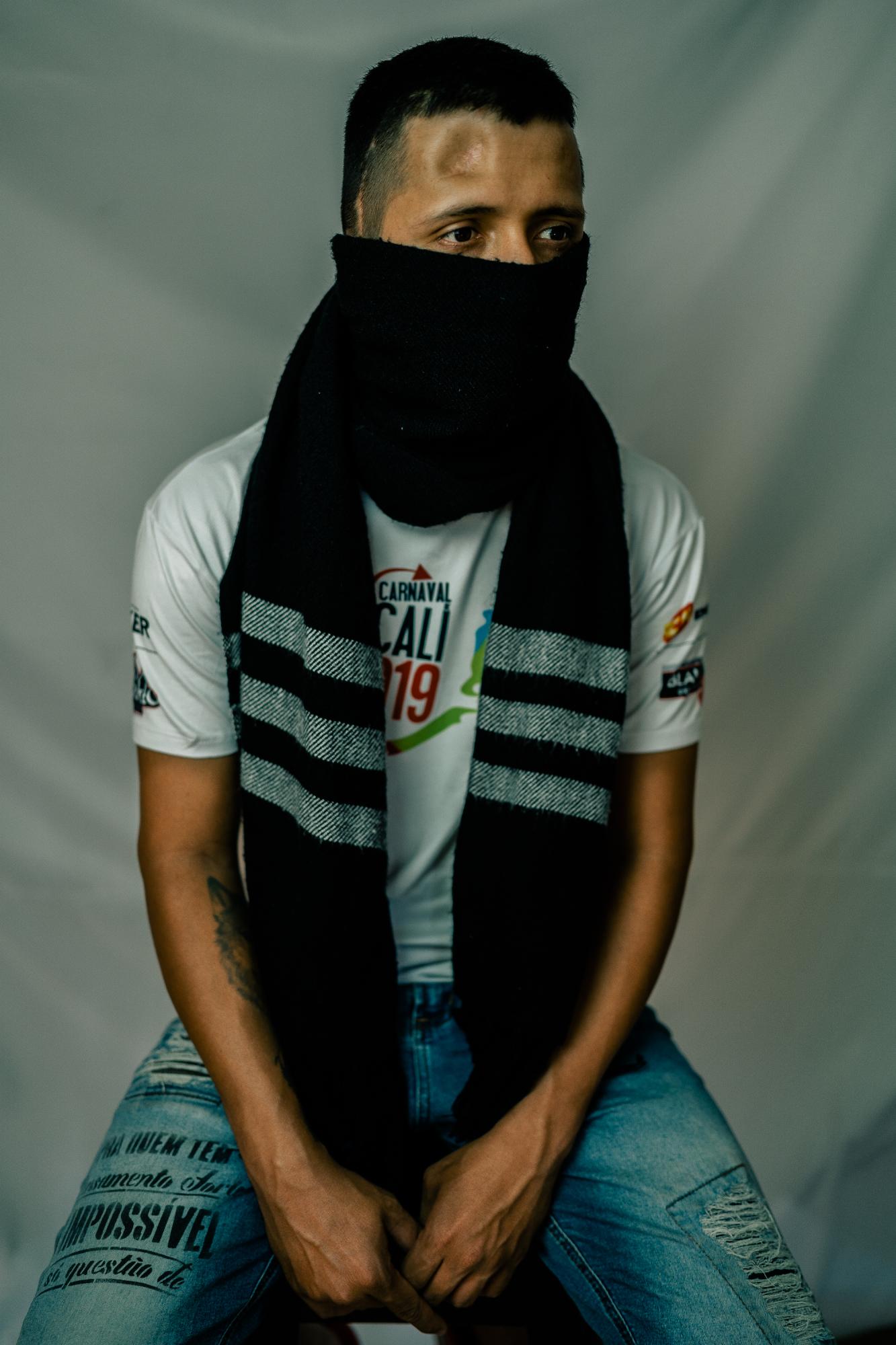
In May of 2021, David was struck by a tear gas canister participating in a protest in Cali, Colombia. The canister fractured his skull leaving an indentation on his right cranium where the bone remains missing. David has undergone multiple surgeries to recover, including a brain operation to remove fragments of his skull that pierced the frontal lobe. Having a long and extensive recovery David lost his job due to his injury. David recounts the incident remembering, "the whole time I thought I was going to leave the children alone, without a father, like I grew up."
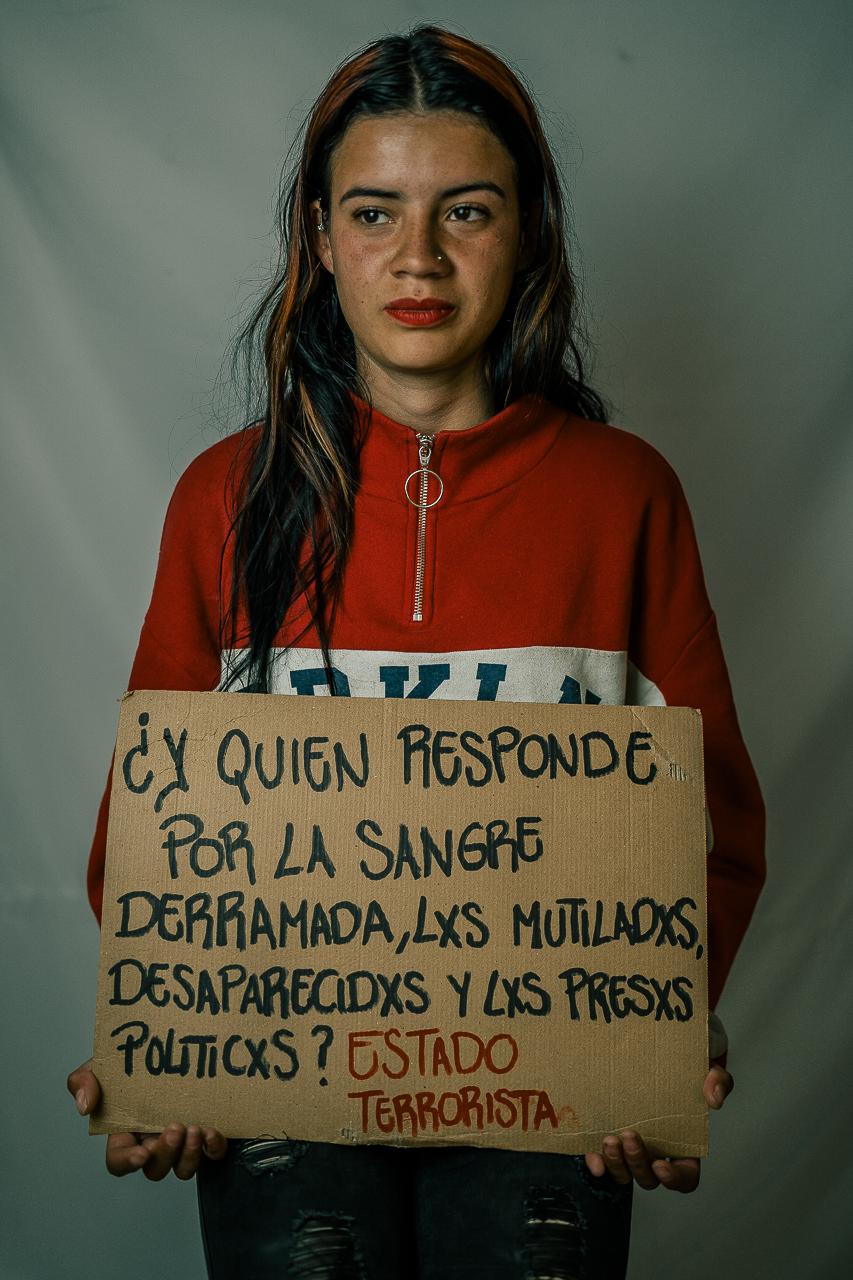
Flaca is a known community leader documenting human rights abuses during the protests in Bogotá, Colombia. She holds a sign that reads, “Who will respond for the spilled blood, the many disappeared, and the political prisoners? Terrorist State.” Flaca was been a target for police officers in Bogotá and has had multiple threats against her life for her role in the protests. Flaca has been subjected to beatings, equipment destroyed, and inapproriate strip searches as ways to initimidate and discourage her from protesting. In the words of Flaca, "My fear, if in reality that I disappear and they never, never find me, that would be terrible for my family. But if I have to die in this to continue fighting for my country, I will do it. "
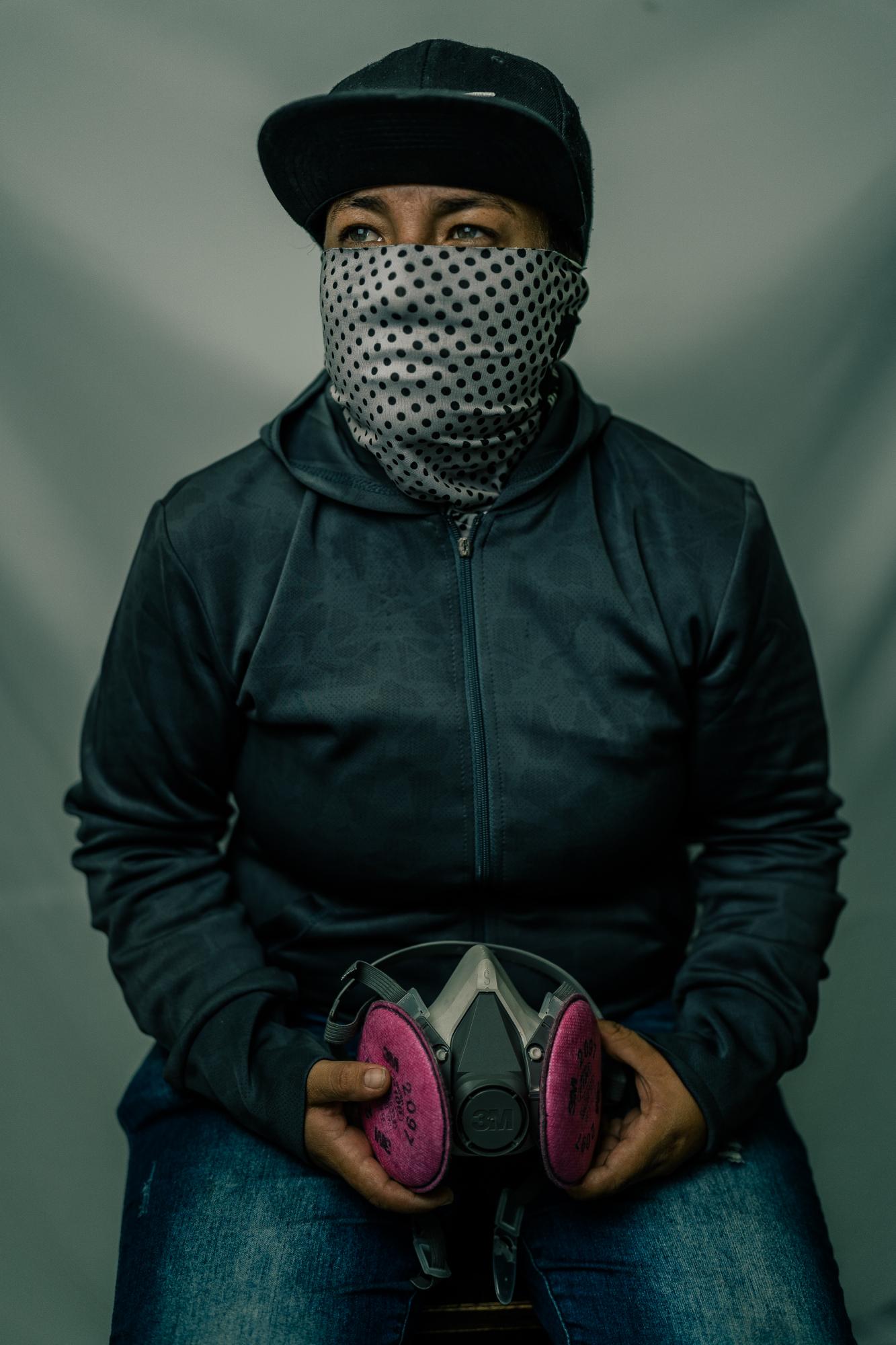
Ojitos is one of many women who participated in the “primera linea” or frontline of the protests in Cali, Colombia. She sits with her gas mask which she used as a protester and first responder in the strike. During the national strike, police would go to hospitals looking for victims of gunshot and/or teargas to arrest them or worse. In response, Ojitos turned her home into a medical clinic so protesters would feel safe seeking treatment. She recently fled the country for safety concerns and states, “right now the persecution continues, and the disappearances continue. They keep profiling the guys. The harassment continues.”
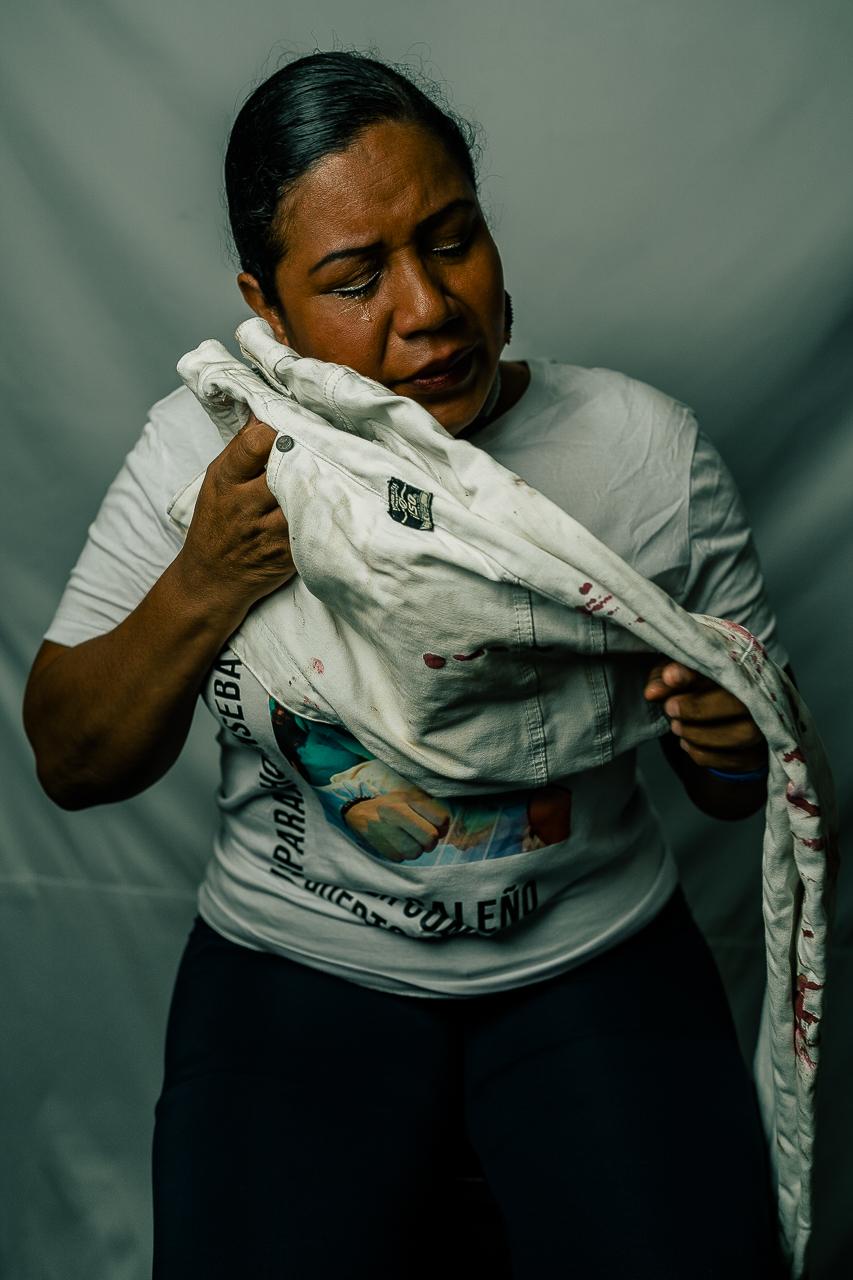
Paula is the mother of Sebastian, a leader of a major resistance point in Cali, Colombia. Sebastian was assassinated with 12 gunshot wounds in July 2021, and Paula poses with the clothes he was killed in. Sebastian worked closly with a German journalist, Rebecca Marlen. Rebecca was also targeted by Colombia officials and was with Sebastian the night he was killed. Sebastian shielded Rebecca with his body, saving her life yet losing his own. Rebecca was deported from Colombia and Paula remains in hiding due to constant threats agianst her life.
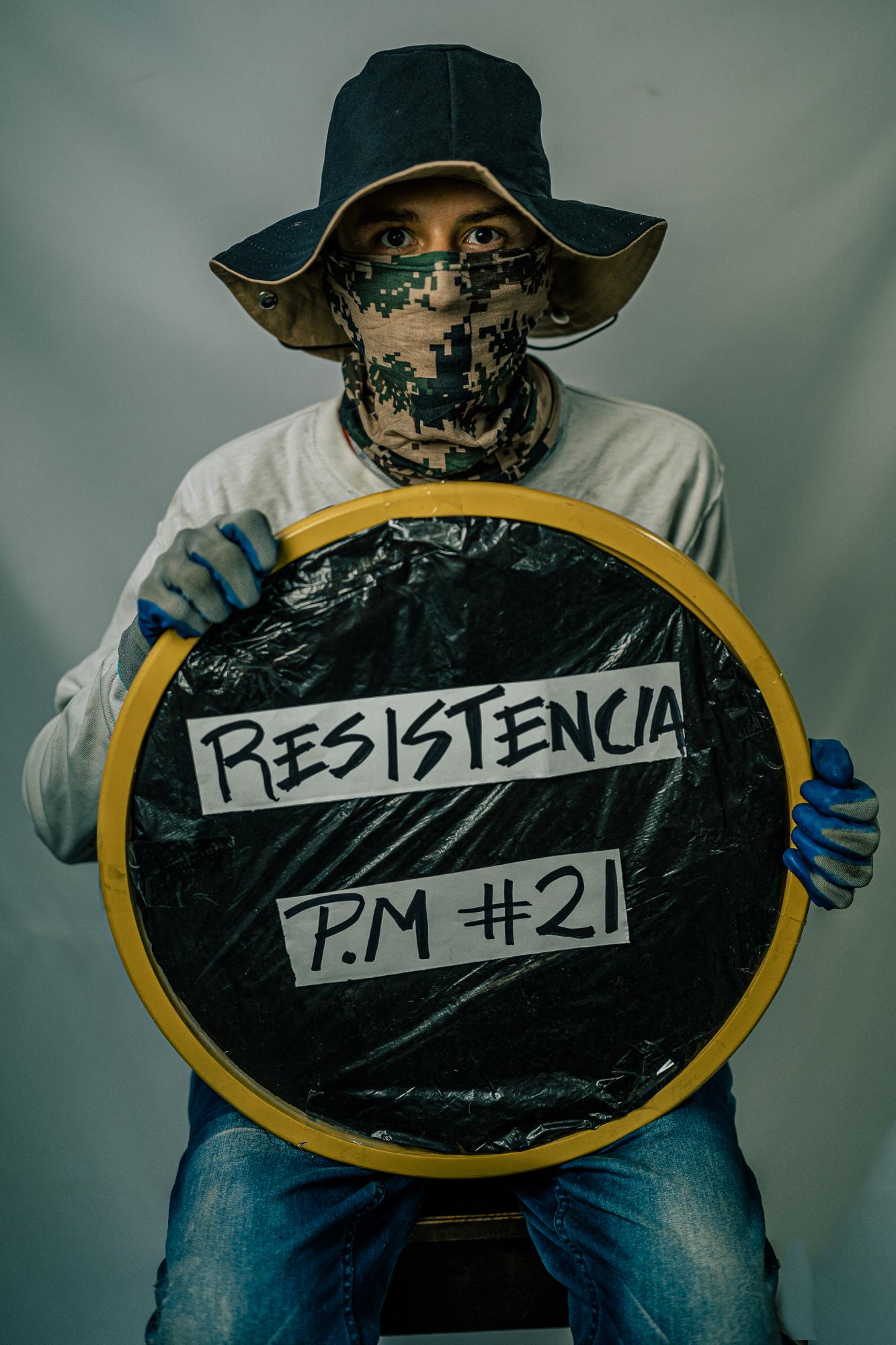
José poses with his shield used in protests in Cali, Colombia. While keeping guard at a resistance point, a car pulled up next to José, which he claims was an undercover police officer, and shot him. The bullet grazed his right temple, almost taking his life. José had to leave Cali due to threats and received numerous surgeries in a neighboring town. José states,
"What I want to say is that there was impunity in this case and it is the impunity that has always existed in Colombia. Many murders and massacres have occurred in villages and in points of resistance, and they have gone unpunished."
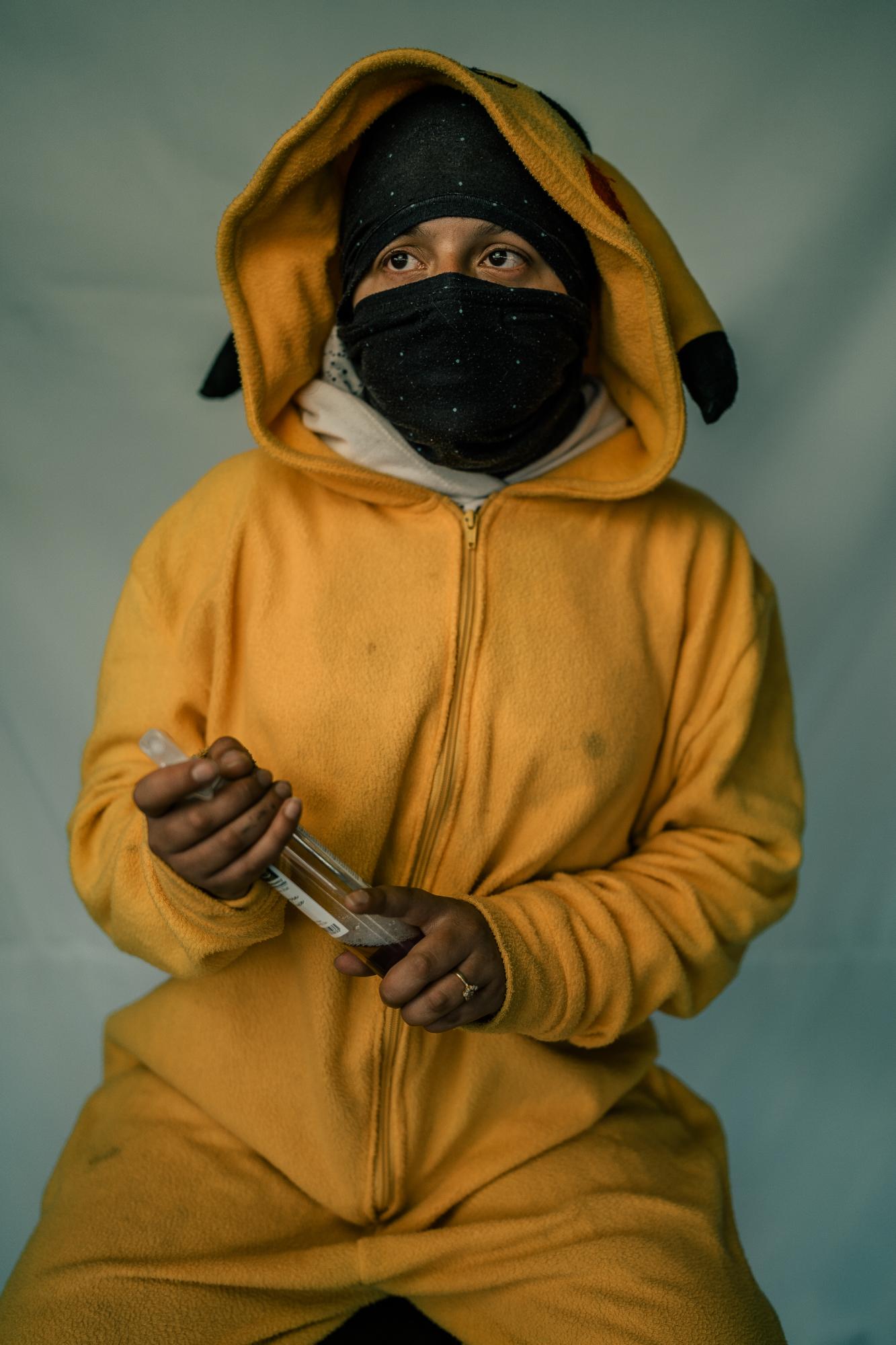
Rayito is well known for her Pikachu costume when protesting in Bogotá, Colombia. She poses with a spray bottle used to help frontline protesters who are subjected to heavy tear gas. Rayito is a university student in Bogotá and has been subjected to tear gas, beatings, and witnessed the death of a community member during the national strike. Rayito states, "We have to fight, we have to show that we fight for what is ours… and that nobody rules over us. So, you always have to fight, fight to the death, if necessary, for everything.”
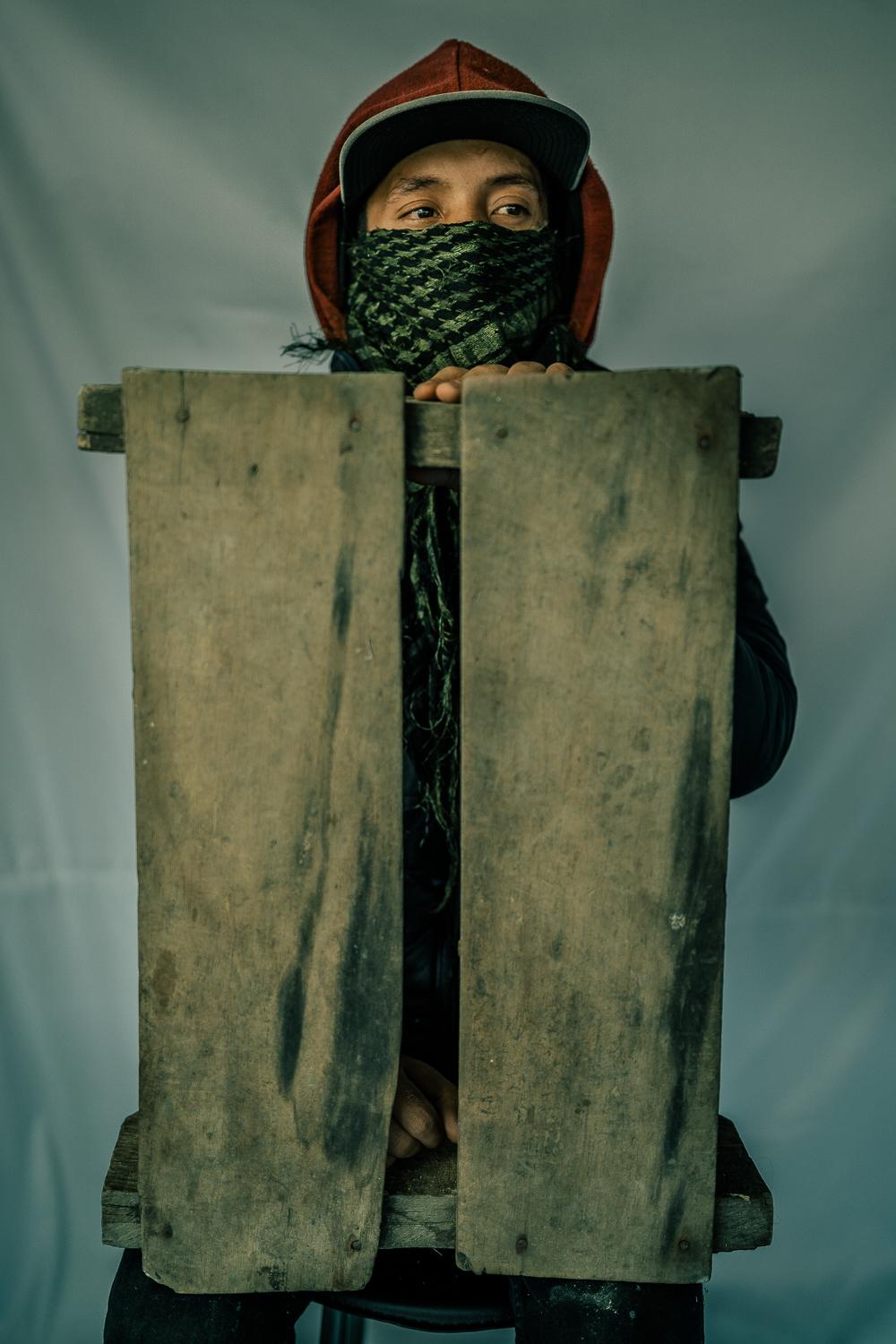
Kikko, a frontline protest from Bogotá, Colombia, poses with a makeshift shield he uses for protection during the national strike. Kikko has been subjected to beatings, tear gas canisters, and witnessed deaths throughout the protests. However, what marked Kikko the hardest was witnessing his friend, Costa, who at 14 years old, was shot with a tear gas canister in the head, fracturing his skull, and paralyzing him from the waist down. “I fight for social equality. I fight for education. I fight for health. I fight for a decent life for the indigenous people, who are our roots, which is where basically all Latinos come from and they are people who are overly stigmatized throughout Latin America and even more so in Colombia”, states Kikko.
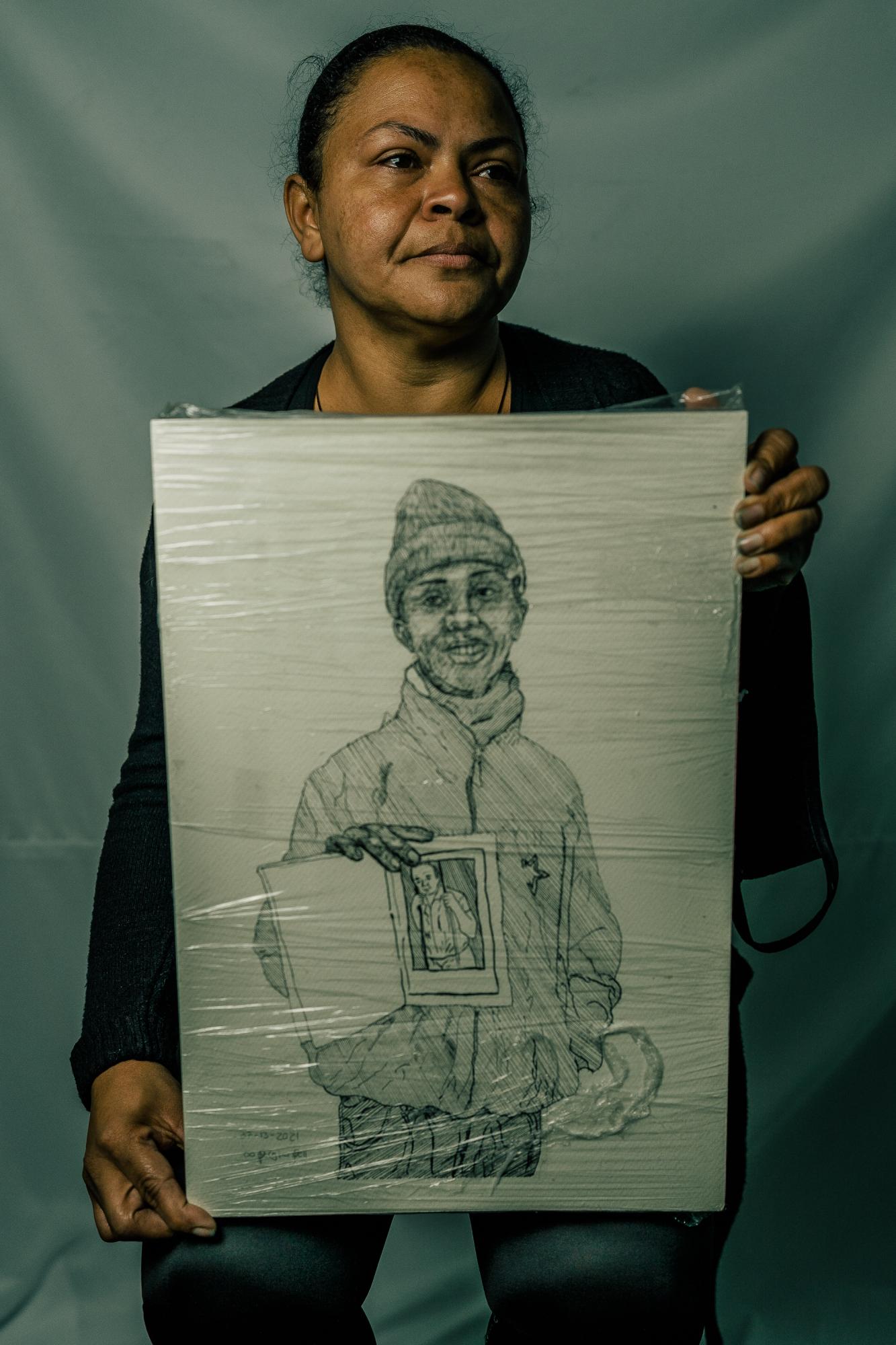
Dolores stands with a drawing of her son, Duban, who went missing in June of 2021, during a protest in Bogotá, Colombia. Duban’s body was later found dead in a ditch with signs of torture. It took authorities over a month with Duban's body in custody, to identify and notify Dolores that the body found was her son. “That boy was my, he was my everything. There are days that I don't want to keep going. I don't want to keep fighting… I don't know how to write, the love that I feel for Duban. When I speak of him my heart squeezes me, like I'm short of breath. It leaves me breathless just thinking about him” states Dolores.
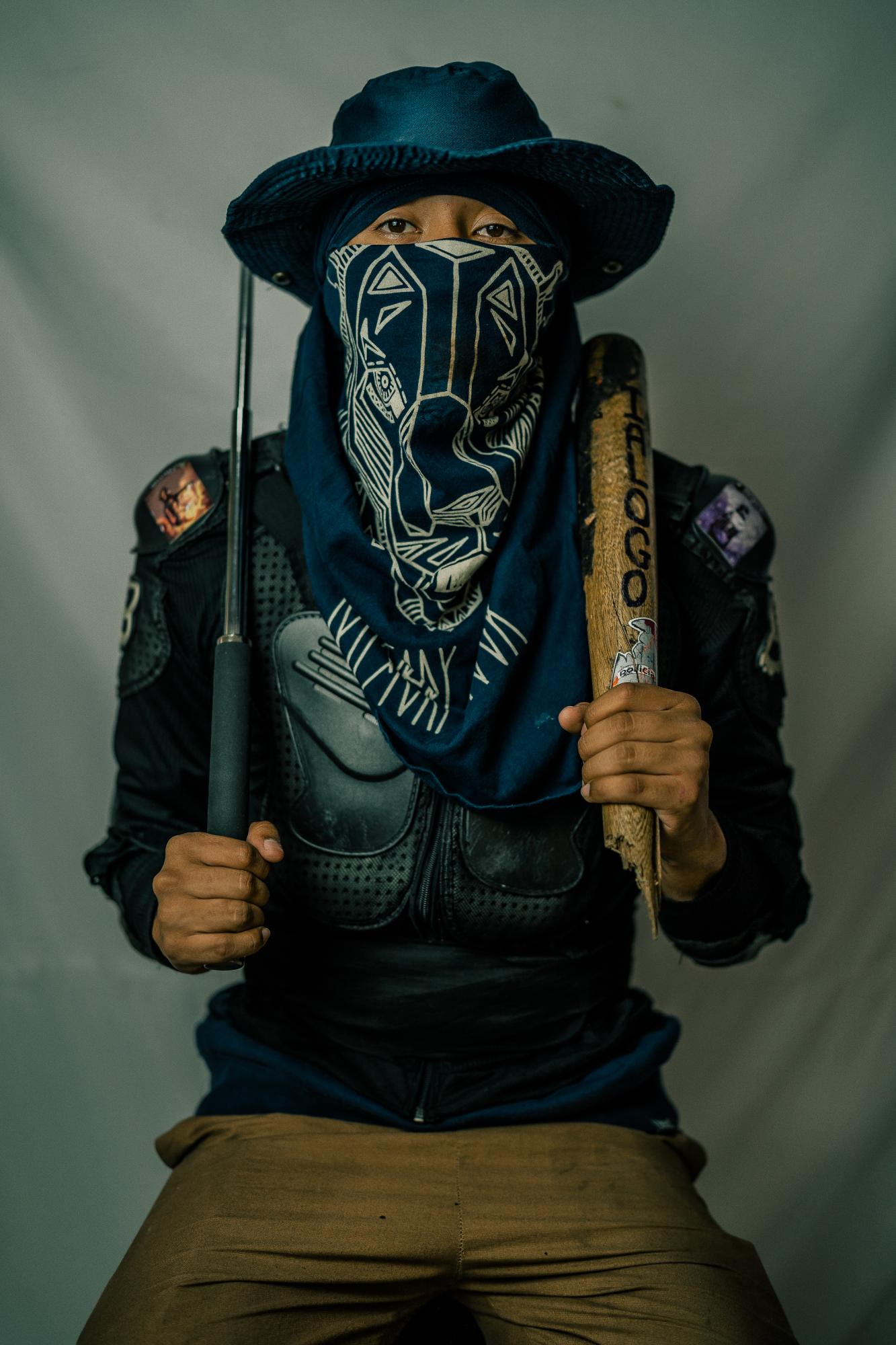
Sotu is a frontline protester who has been captured, tortured and beaten multiple times by police officers in Bogotá, Colombia. Sotu poses with a broken baseball bat and a metal rod he uses in the strike. Sotu was taken by police officers and burned with hot needles to discourage him from protesting. In the words of Sotu, "I'm going to keep fighting and I'm not afraid of anything, Not the government, not being shot or anything, but what makes me more afraid honestly, is if the people never wake up."
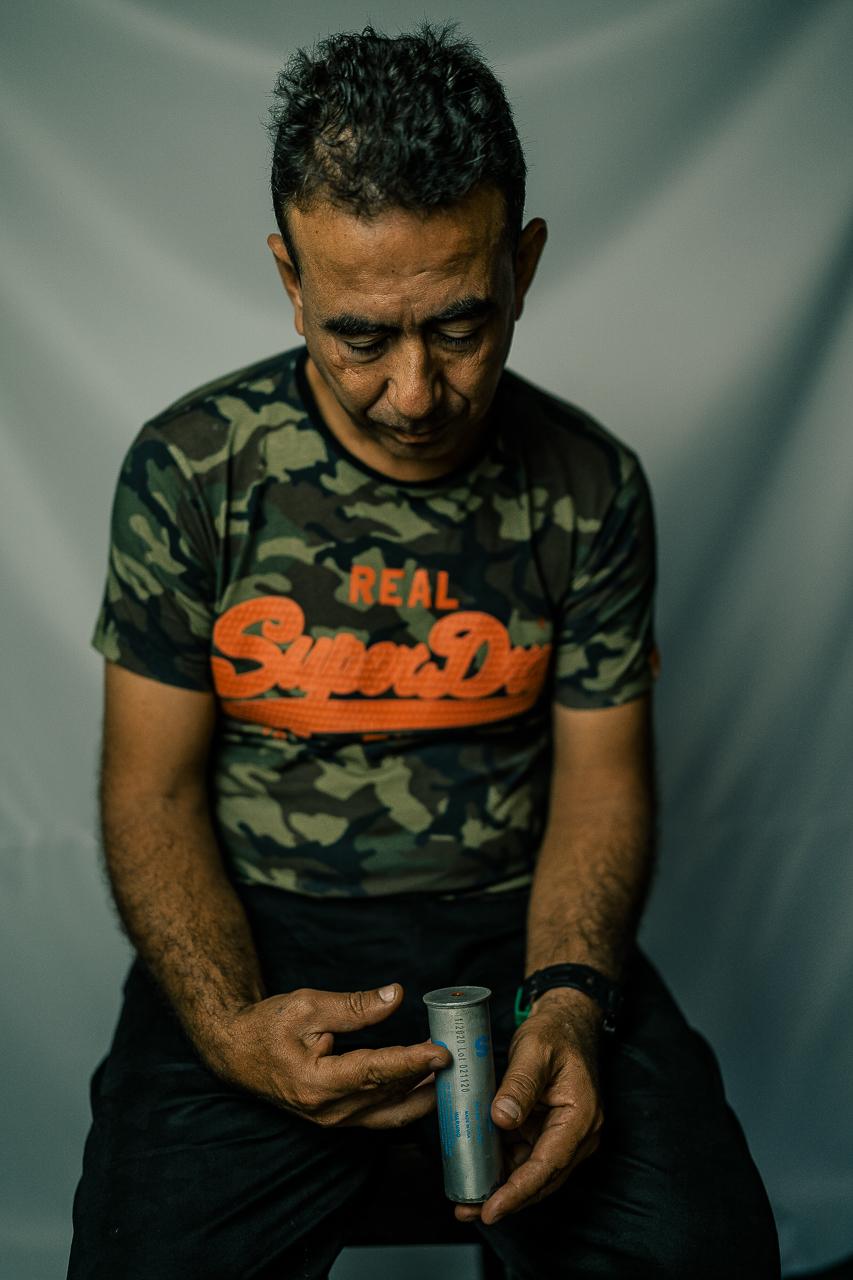
Reynardo, is a frontline protester from Yumbo Valle, Colombia who poses with the tear-gas canister that struck him next to his right eye. Reynardo has been homeless since the pandemic, and participates in the strike for a better Colombia. Reynardo says, "I have nothing to wash my hands with. And I am a 43-year-old person who at this age doesn't even have a house of my own, I don't even have a decent roof over my head."
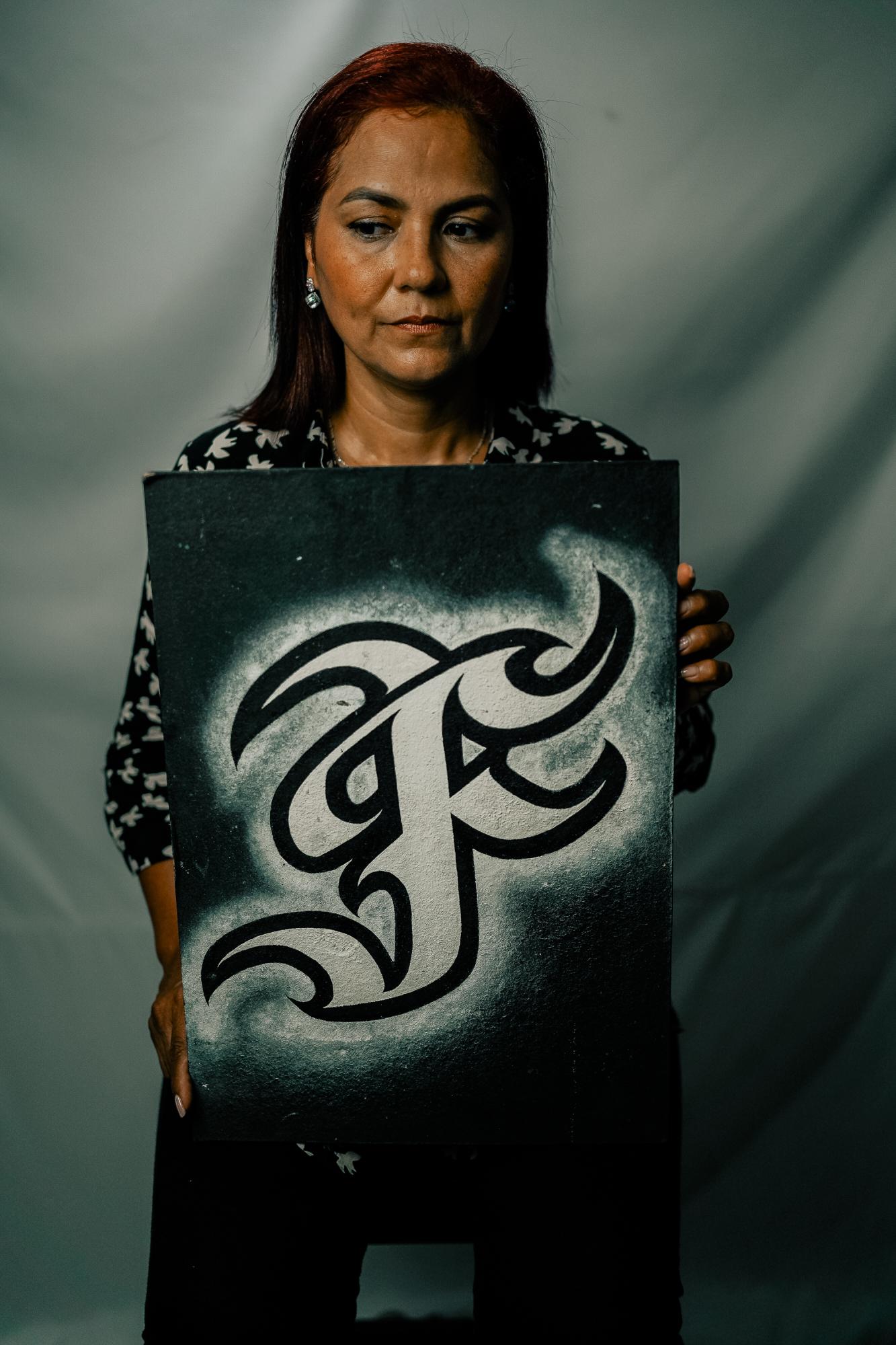
Laura poses with a sign that says “F”, for “Flex.” Laura’s son, Nicolás Guerrero, was a graffiti artist known as Flex and was shot and killed by police officers in Cali, Colombia during the national strike. Nico’s death was part of an Instagram Livestream that went viral where more than 140,000 people witnessed his murder. Nico has become a symbol of resistance throughout Colombia. Laura states, “My strength comes from the very love I had for my son. From the desire to bring the truth to light, not to leave his name as if he had been a bad person.”
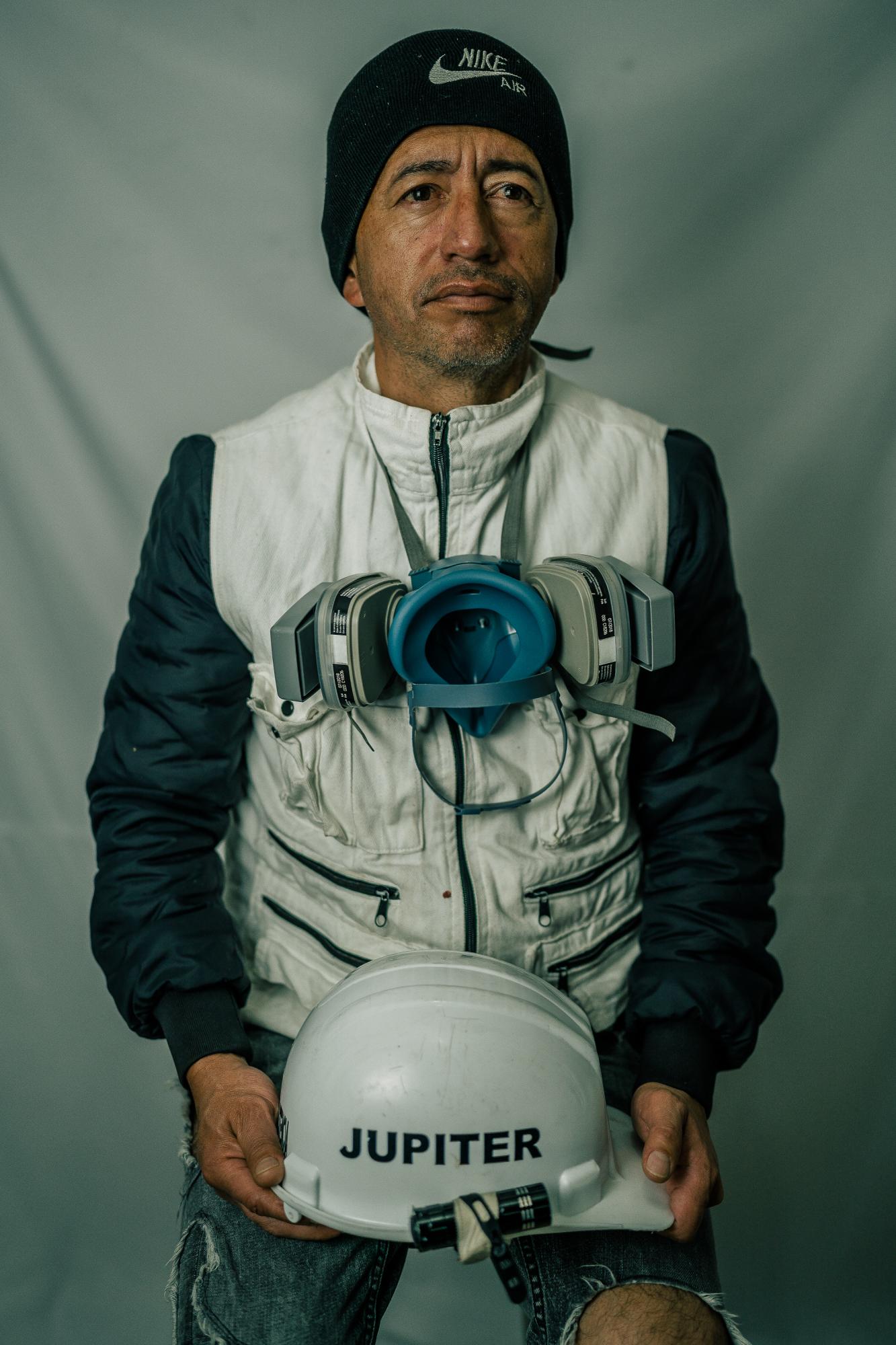
Jupiter poses with his helmet and protection gear he uses during emergency medical treatment at the protests. Jupiter and his team voluntarily setup medical units to treat injuries at the protests in Bogotá, Colombia. In Jupiter's words, "I go out to save lives and that is what moves me and what moves the brigade, is love for this.... We do not use anyone's resources, we simply do it out of self-love, out of love for the Colombian people."
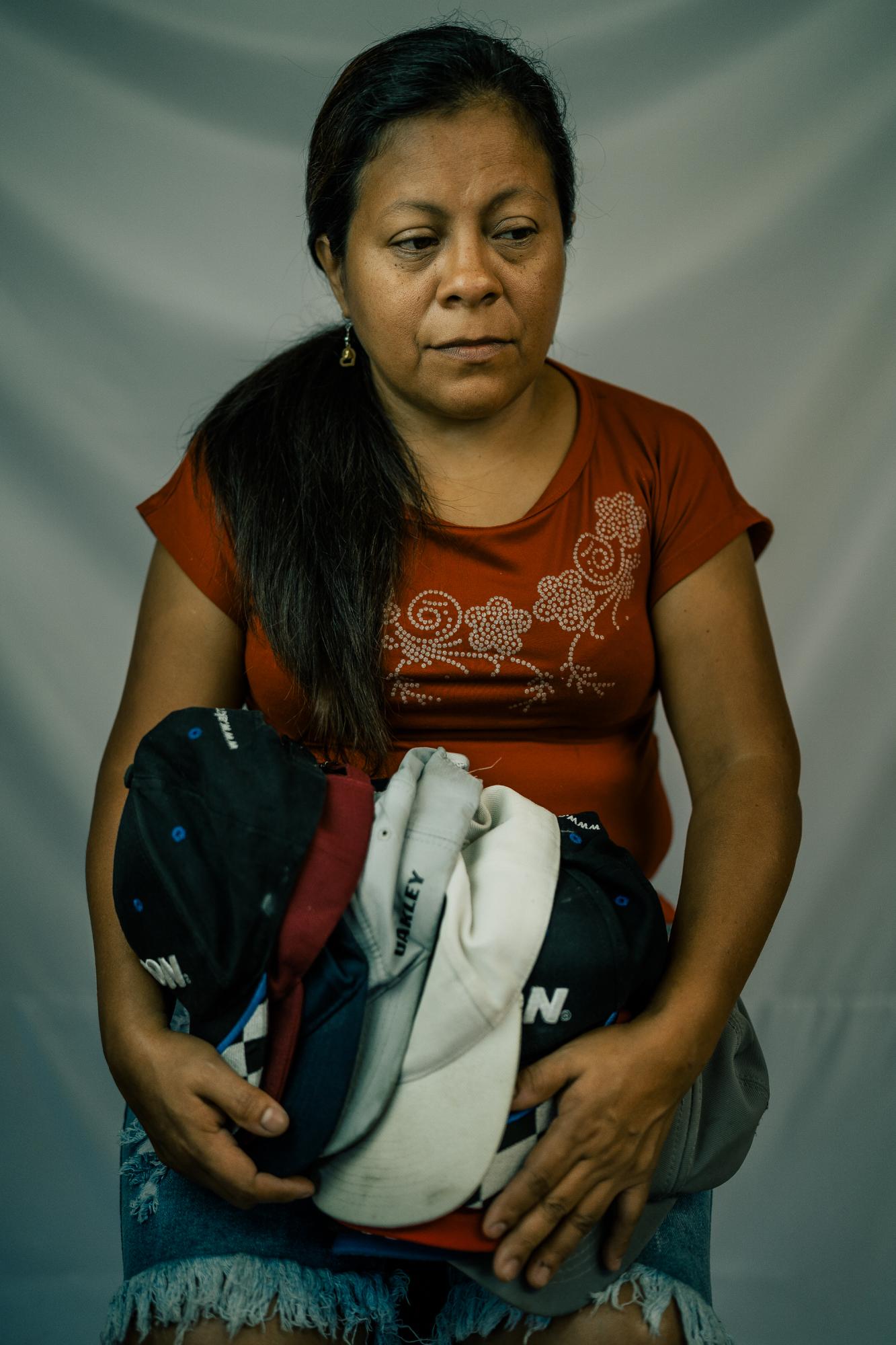
Maria poses with a collection of hats from her son, Michael, who was shot and killed by police officers in the neighborhood of Siloé in Cali, Colombia. Siloé was one of the neighborhoods most affected by the national strike in Cali. Michael was 24 years old and leaves a 2-year-old daughter behind. Maria says, “The police really attacked them very badly this time. With firearms and it shouldn't have been like that, but they attacked them. By orders of the state itself, they do it and it ended up with many young people killed and many disappearances.”
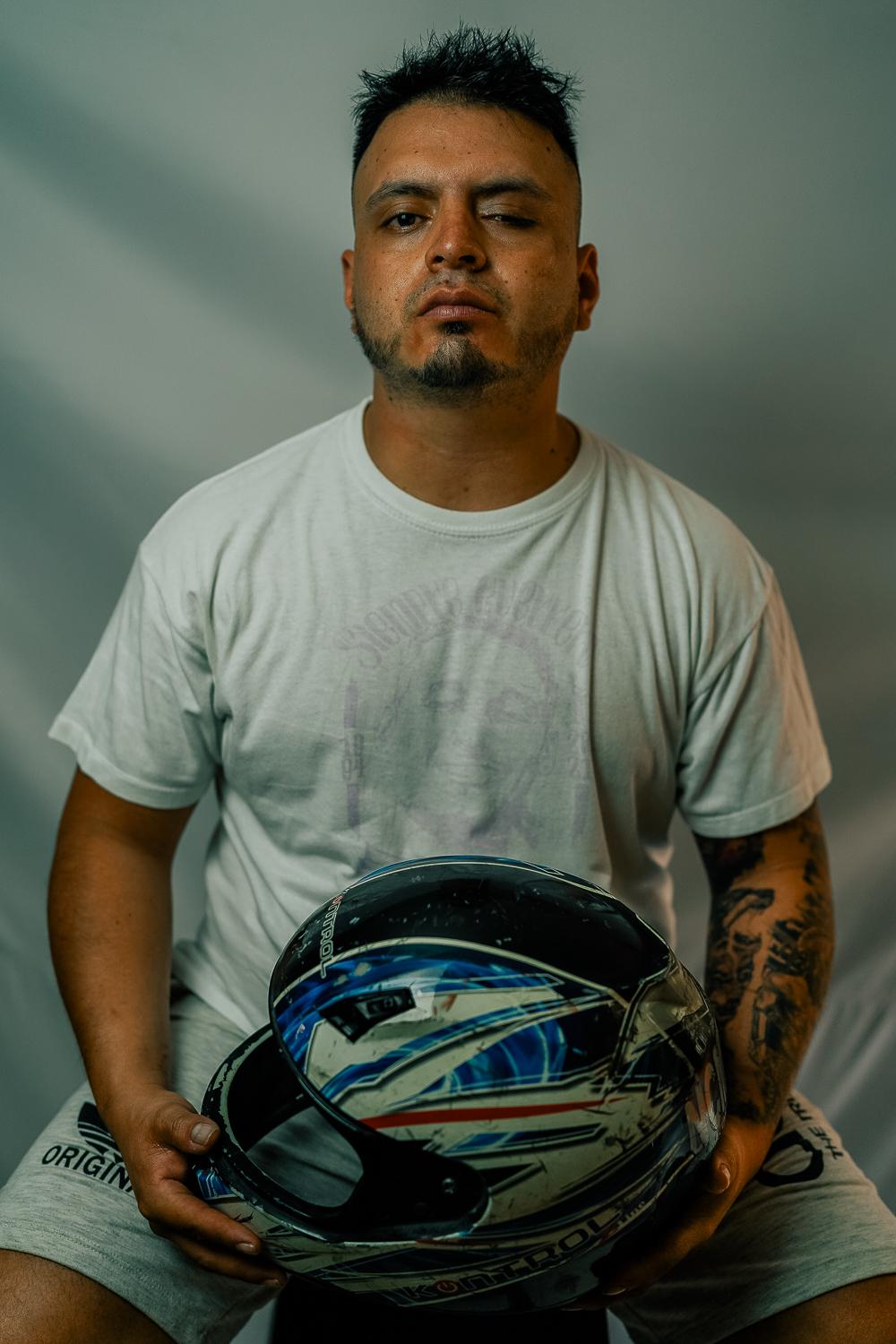
Michael is a frontline protester who poses with the helmet he used in the strike, and states, “saved his life many times.” Michael was struck by a tear-gas canister in Cali, Colombia, and lost all vision in his left eye. “Losing your vision. Losing the symmetry of your face. Becoming a person with a disability is not easy to adjust to. You don't want to internalize it; you don't want to realize that you have a very strong risk of going blind, because if something happens to my eye, well, I could lose my vision completely” states Michael.
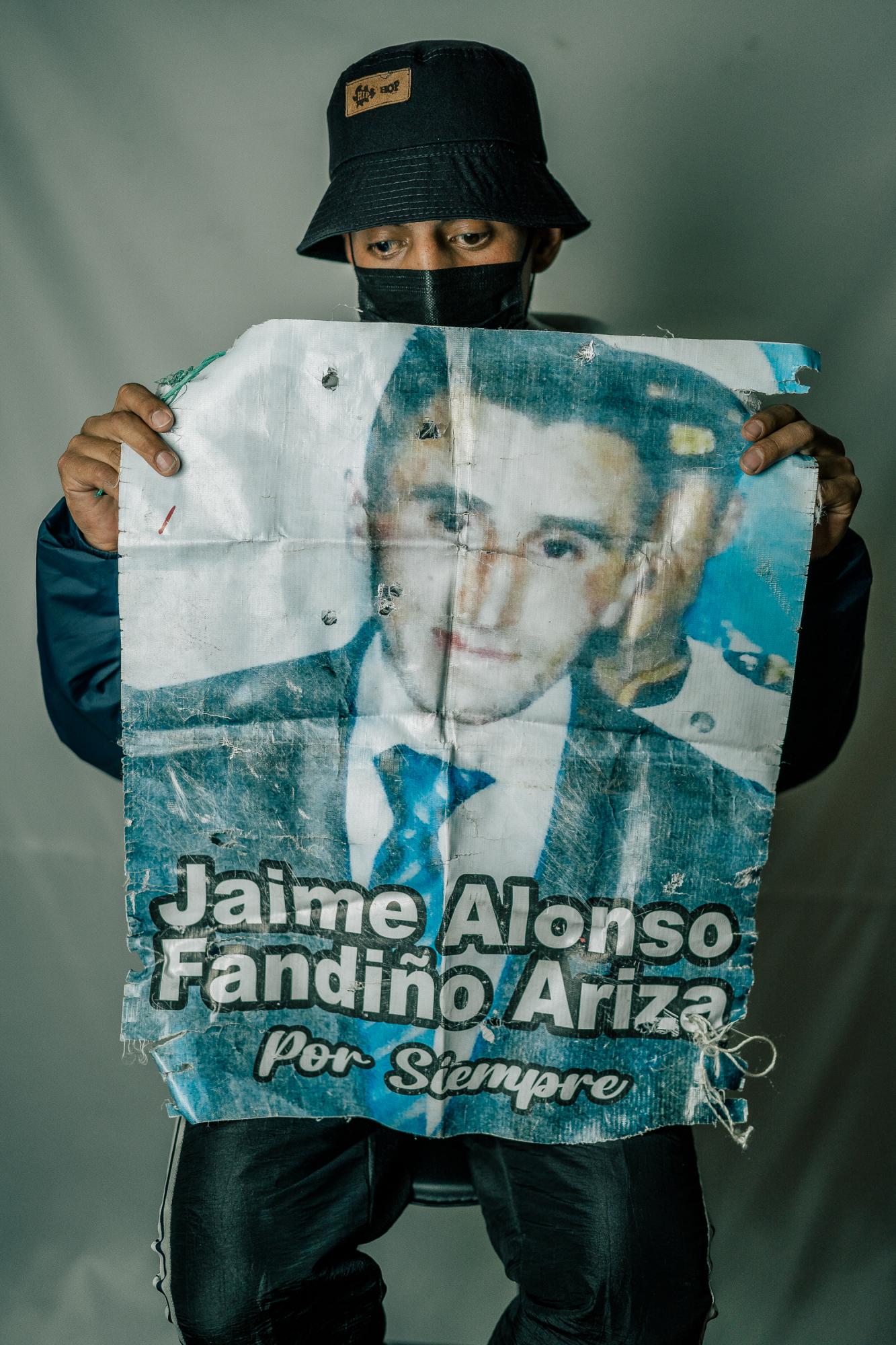
Topo poses with a poster of a Jamie, who was killed during the protests by police in Bogotá, Colombia. After Jaime’s death in Topo’s neighborhood and witnessing the effects of how the loss devastated the community, Topo decided to become involved in the strike. Topo is now a frontline protester in Bogotá, Colombia and recently lost vision in his right eye after being struck by a rubber bullet. Topo states, “That's why I always protest with his photo because it’s a symbol... people can see that he is still here with us and continues to demonstrate with us."
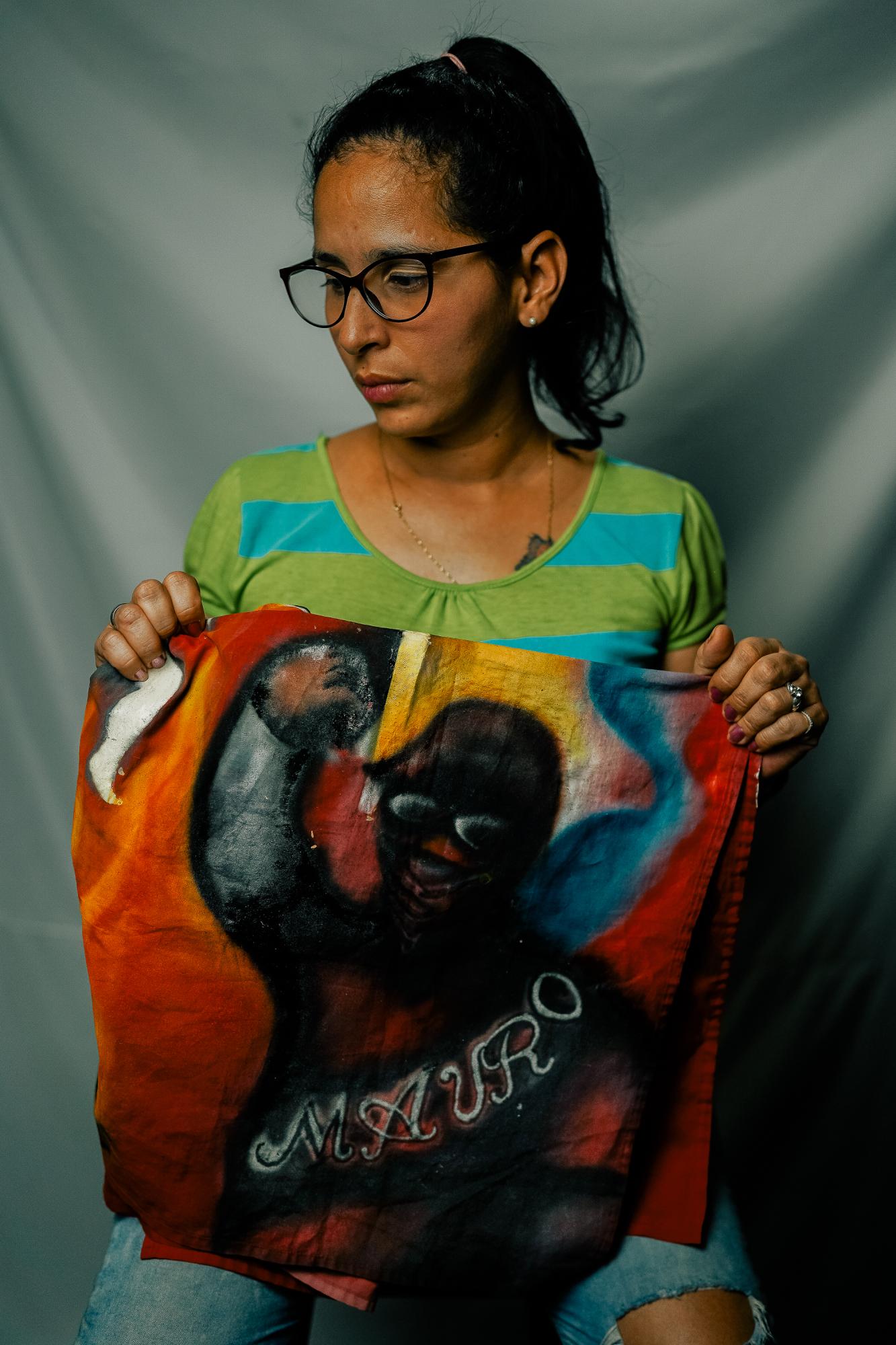
Natali holds a banner in honor of her brother, Mauro, who died in Cali, Colombia. Mauro was a frontline protester on guard duty at a resistance point, when fellow protesters murdered him. Natali describes her feelings as, "the truth is that sometimes I get depressed and very angry because I start to cry and I get really bad....but really he has been the strength not to give up and keep going."
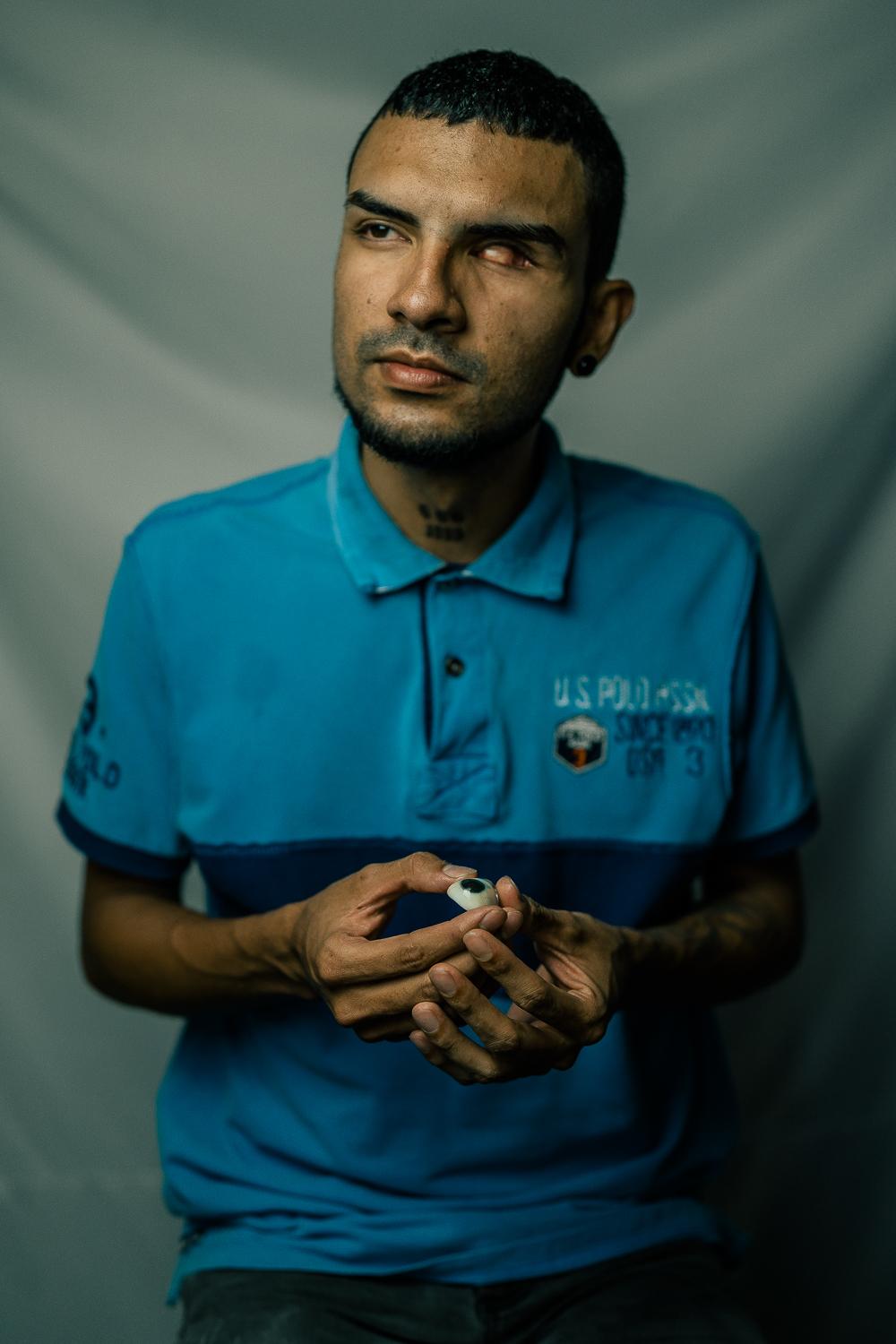
Giovanny poses with his prosthetic eye in Cali, Colombia. In April of 2021, Giovanny lost his left eye after being struck by a tear gas canister during the national strike. In the words of Giovanny, " I lost a part of my body, but there were people who lost their lives, that is more important. But thanks to this, so to speak, it was made the country wake up and realized that we need change. "
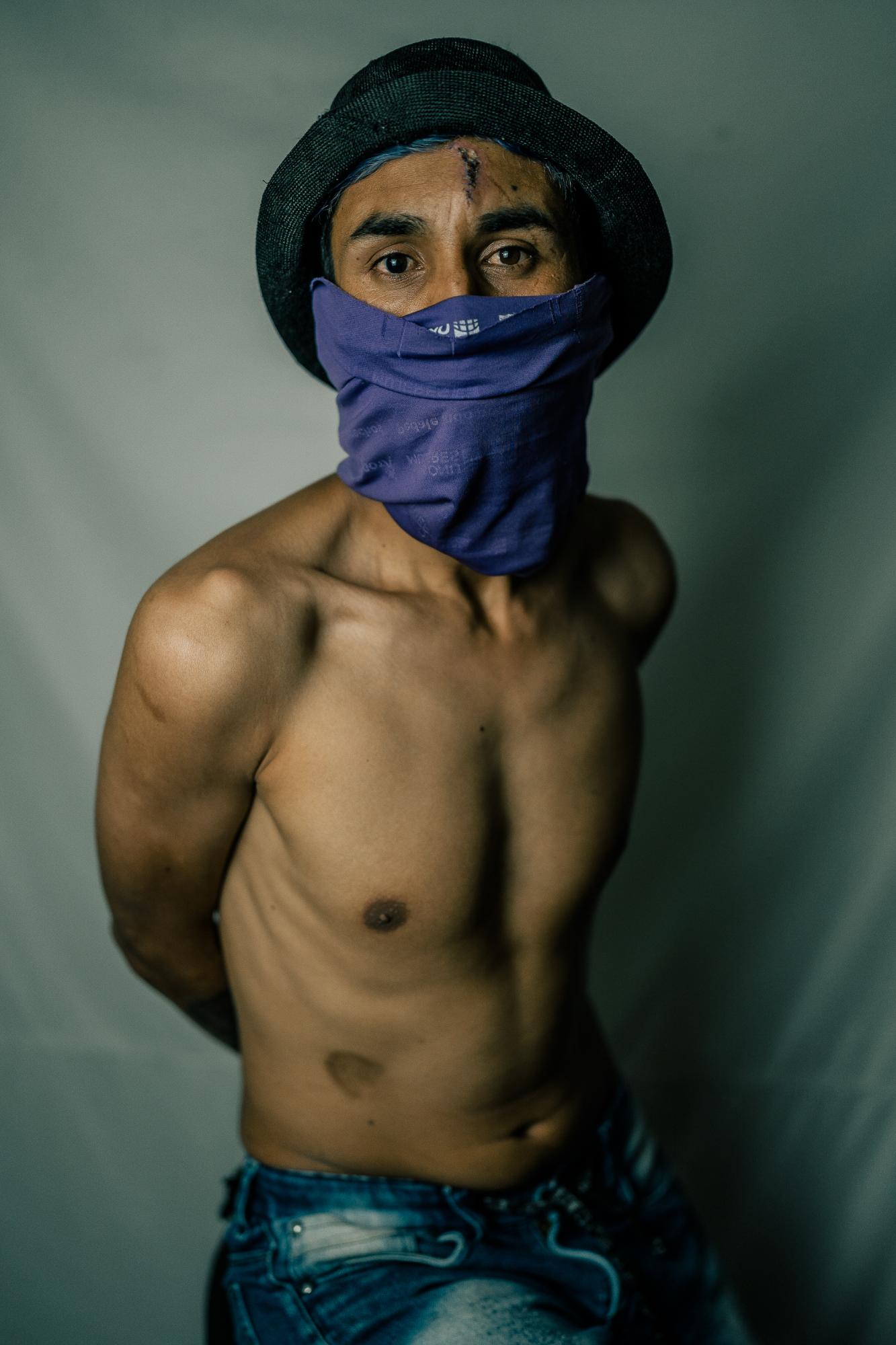
Burro poses with a recent scar on his forehead from a police officer hitting his face with a rock, and also showing a bruise on his right side due to being struck by a tear gas canister in Bogotá, Colombia. Burro was kidnapped by paramilitaries who accused him of burning down public transportation buses during the strike. After three days of being tied to a chair, he was released as several busses burned down while he was in their custody - determining it was not him. Burro recounts the kidnapping, “A man caught me and told me to go to the pickup... The first thing I see is he shows me a nine-millimeter and two guys get out of the car and tell me to get in.”



















